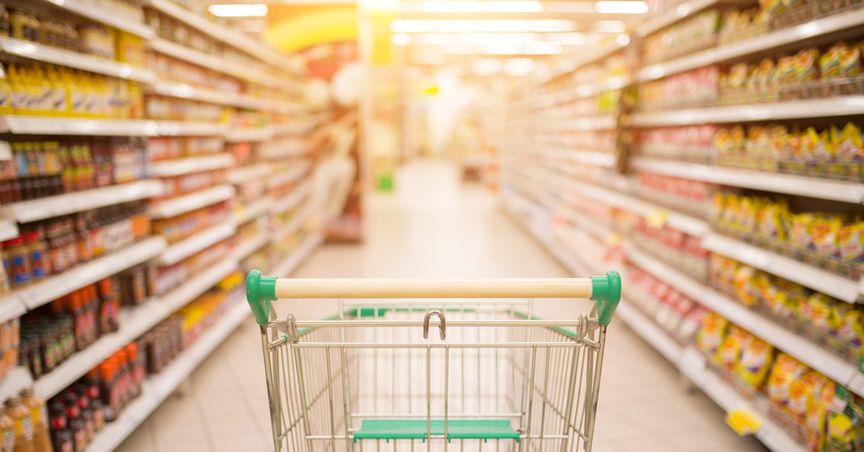Summary
- Shop prices in UK fell by a worrisome 2.4 percent during 1-7 May 2020, as per a BRC survey
- Food is the only category where shop prices have risen
- Clothing and furniture lead the fall
Shop prices in the United Kingdom have fallen by 2.4 percent during 1-7 May this year, the largest drop in monthly sales witnessed since December 2006, the time when this series began. The prices fell during the same period in April as well, but at a lower rate than this, by a figure of 1.7 percent.
These figures are released by a survey from the British Retail Consortium (BRC), a national trade association of UK retailers. Around 70 percent of the UK retail industry is a member of the consortium.
The retail sales are drastically down at worrisome levels as people fear going out with new corona infections still being found on a daily basis across Britain. The main reason for shop price fall is that retailers kept trying to woo back customers with discount sales and promotions.
It is worth recalling that UK went into a nation-wide lockdown on March 23 this year as a measure to fight the fast-spreading corona pandemic. The lockdown is in the process of gradually being phased-out. Beginning May 13, people were allowed to go out for walks along with easing of restrictions on playing few sports as well. The second phase began on June 1 with opening-up of non-essential retail shops and schools for selected primary grades. Construction activities and public transport were also opened up for work. Phase three is to begin on July 4 with a planned opening of food-joints, hospitality industry, hair and beauty salons and selected public places.
Looking at the category-wise distribution of the BRC shop-price trend, one can notice that food is the major category where shop prices have risen in during the first seven days of May. Retail food prices rose by 1.5 percent during the period as compared to a 1.8 percent rise during the corresponding period in April 2020. Within the food category, the rise in prices of fresh food items was slower at 0.5 percent for the stipulated period of May 2020. While price rise was 2.9 percent for ambient food items for May’s period. Ambient food is the food which can be stored at room temperature.
The sharpest fall is witnessed in the category of non-food items at a rate of 4.6 percent in May. The sub-categories leading the downturn were clothing and furniture.
Retailers are facing challenging times to survive and are struggling to survive. With shops for non-essential items gradually opening up, more discounted and promotions can be expected. Demand has fallen flat and future of economic recovery is still up in the air.
How are the UK retailers managing?
With the announcement of lockdown restrictions in March, grocery sales suddenly shot up for all retailers, due to consumers being panic-struct. But the growth reversed in April, as expected, and retail sales continued to fall in May.
While the sale of items like games consoles, bicycles, office equipment, and haberdashery have risen during the lockdown period, but it has not been able to cover up for the loss of in-store buying.
Let us have a closer look at plans and performance of few biggest retailers in the United Kingdom.
Tesco PLC (LON:TSCO): To encourage safety of its customers and staff, Tesco has removed the pick and mix type of sweets from its shelves. It has instead introduced wrapped ‘pick and mix’ sweets in small bags from mid-May across its 700 stores nation-wide.
Focusing on serving customers online, the retail chain raised its number of weekly online orders served from 590,000 in the first week of March, to more than 1 million in the last week of April 2020. This means it almost doubled its online serving capacity within a short span of two months.
Tesco reported that its sales for financial year ending February 29, 2020 totaled £44.9 billion for its UK and Republic of Ireland businesses, up by 0.2 percent as compared to the last year.
Tesco stock is trading at GBX 230.90, down by 0.09 percent on June 5 at 11:41 AM GMT.
J Sainsbury PLC (LON:SBRY): Sainsbury runs UK’s second largest supermarket chain and has recently appointed Simon Roberts as the new Chief Executive. He plans to raise sales by spending more time in taking direct feedback from customers for any improvements.
Shopping habits that are being imposed as a result of the corona pandemic could stick beyond the crisis, like ordering groceries online. For Sainsbury, around one third of its sales during April 2020 took place online, using its SmartShop app.
The company posted a profit before tax of £586 million for year beginning April, 8 2019 to Mar 7, 2020, a two percent fall as compared to last year. The company’s stock is trading at GBX 199.05, down 0.28 per cent on June 5 at 11:40 AM GMT.
WM Morrison Supermarkets PLC (LON:MRW) Retail sales for Morrison rose by 5.1 percent during the 14 weeks to May 10, 2020, as a result of consumers stocking-up in late March, once the lockdown was imposed. But the company is experiencing rising costs as it has to maintain social distancing norms at every step of its selling process. Morrisons’ stock is trading at GBX 187.05, down 0.74 per cent, on June 5 at 11:39 AM GMT.
Overall employment in the retail sector is also falling. According to the latest BRC Survey, the total number of retail workforce was down by 3.1 percent in Q1 2020, as compared to the same period last year.
The ongoing restrictions on social gatherings will put a dampener on any seasonal jump in sales due to a festival or a social event like marriage and birthday parties.
Since the job market is under stress, consumer demand for luxuries like expensive watches, bags or shoes, general merchandise, clothing and furniture is likely to remain subdued in the near future. It remains to be seen if the shop prices fall further in the coming months of 2020 or are able to withstand the flat sales scenario.





